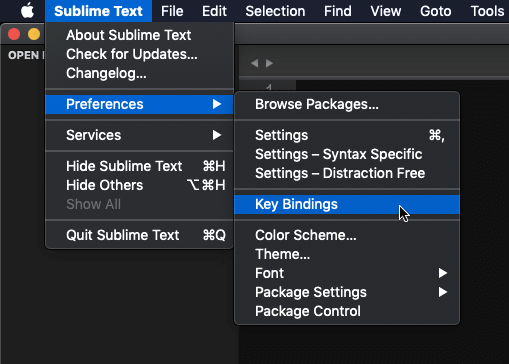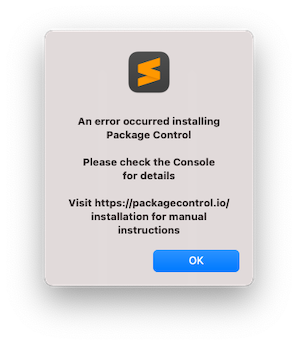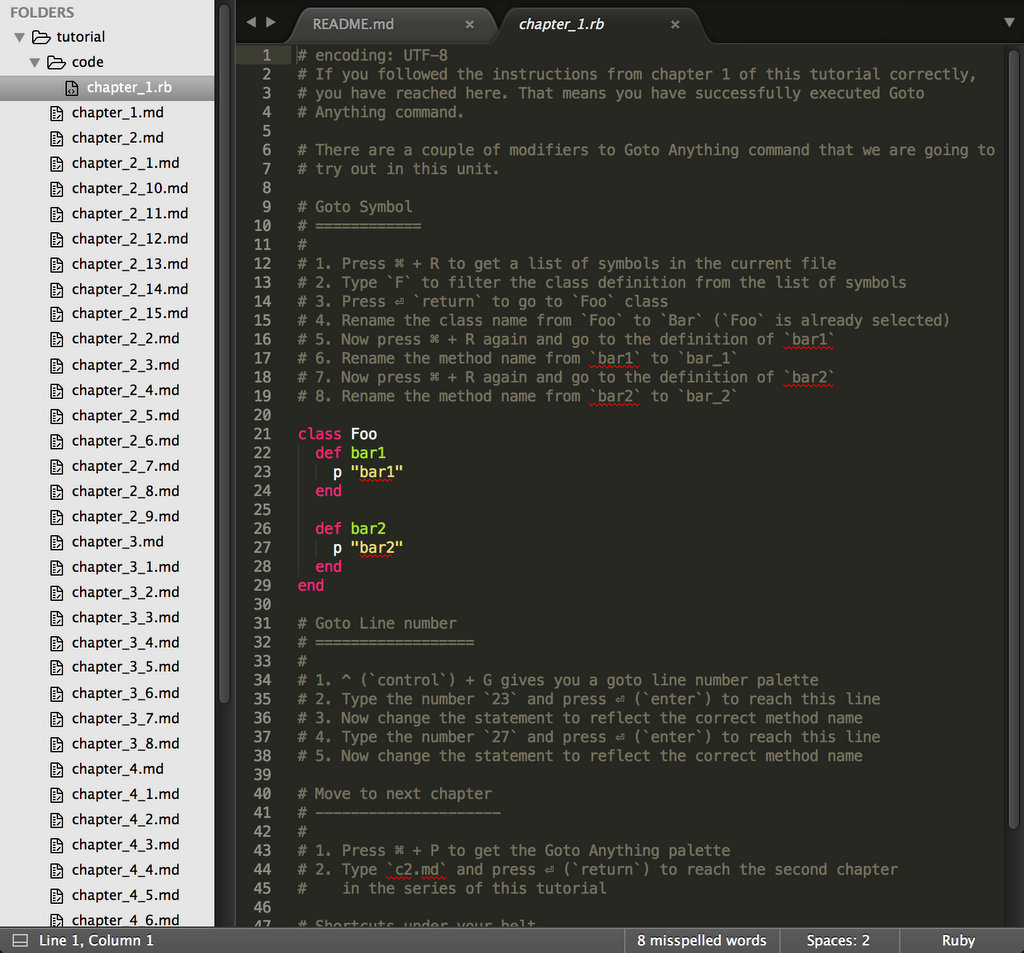

- #Sublime text 3 package control for mac for free#
- #Sublime text 3 package control for mac install#
- #Sublime text 3 package control for mac 64 Bit#
- #Sublime text 3 package control for mac update#

It supports many programming languages and markup languages, and its functionality can be extended by users with plugins, typically community-built and maintained under free-software licenses. It has a Python application programming interface (API).

You can use any other key combination you like.Sublime Text is a sophisticated text editor for code, markup and prose. This keybinding starts Sublime Text Editor whenever the user types “Ctrl+Alt+s”. Keybindings can be added within the … object. Using Debian LXDE, I added the following keybinding to ~/.config/openbox/lxde-rc.xml. This is strictly optional, but in Linux I like to have keybindings for starting terminals and development environments. Step 7: (Debian LXDE) Set up a keyboard shortcut for starting Sublime Text Editor. sublime-project files into version control so everyone has the same settings, and ignore other Sublime config files. See for more on Sublime Text Editor projects. If this is a new project, you can create a project-specific settings file by going to “Project/Save Project As…” and saving a file as project_name.sublime-project.įor my current project I’m using 2-space indentation, so I have the following settings in my sublime-project file: "settings": You can add any settings you want to apply across Sublime Text Editor to this file. Step 5: Add global settings under “Preferences/Settings - User”. I like to set a key binding for reindenting files. You can see “Preferences/Key Bindings - Default” for examples.

Step 4: Add global key-bindings under “Preferences/Key Bindings - User”.
#Sublime text 3 package control for mac install#
Prerequisite: run “gem install rubocop” to install the backend code analysis tool.Adds more advanced static code analysis to the Ruby linter.Checks against syntax and code style guidelines for the Ruby programming language.Base for language-specific extensions which verify syntax and code style.Added lines are indicated using a green “+” icon, removed lines with a red arrow, and modified lines with a yellow square.Adds color-coded icons to the left of changed lines to indicate uncommitted changes.Links are provided for interest only, you can install the plugins within Sublime Text Editor using the package manager. Once you have Package Control Manager installed, you can open “Preferences/Package Control” to access the package manager interface.Įnter “Install Package” to get a list of all available plugins. Step 3: Install any Sublime Text Editor plugins. Package Control Manager can be used to list, enable/disable, install/uninstall Sublime Text Editor plugins. Step 2: Install Package Control Manager.įollow the instructions on.
#Sublime text 3 package control for mac update#
Update (): As of September 2017, Sublime provides official repositories for apt, pacman, yum, dnf, and zypper, so Linux users can get updates through their package manager of choice after adding sublime-text to their source list as per their install instructions. Step 1: Download Sublime Text Editor 3.įollow the download instructions on and install. It is paid software, so in evaluation mode you’ll receive a prompt asking if you’d like to purchase a license after every few file saves ( $80 USD as of September 2017).
#Sublime text 3 package control for mac for free#
The full program can be evaluated for free indefinitely. It’s highly customizeable, with many user-developed plugins that tweak various parts of the interface. Sublime Text Editor is a popular proprietary text editor that runs on Windows, Linux and Mac OS. In this post I’ll go over how I set up Sublime Text Editor for Ruby on Rails development.


 0 kommentar(er)
0 kommentar(er)
